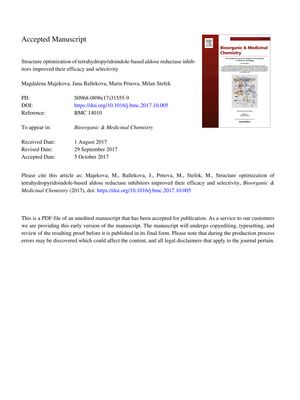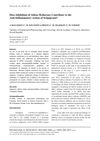Structure Optimization of Tetrahydropyridoindole-Based Aldose Reductase Inhibitors Improved Their Efficacy and Selectivity
October 2017
in “
Bioorganic & Medicinal Chemistry
”

TLDR Optimizing the structure of a specific compound greatly improved its effectiveness and precision for treating diabetic complications.
The document from December 1, 2017, details a study on the optimization of tetrahydropyridoindole-based aldose reductase inhibitors, specifically focusing on compound 3, which demonstrated significant improvements in efficacy and selectivity for the treatment of diabetic complications. Compound 3 was found to have low nanomolar IC50 values, high selectivity index, and demonstrated the ability to significantly inhibit sorbitol accumulation both ex vivo in rat eye lenses and in vivo in red blood cells and the sciatic nerve of diabetic rats. The study concluded that compound 3, with its high "lead-likeness" and potential for further optimization, is a promising candidate for the development of new treatments for diabetic complications.
